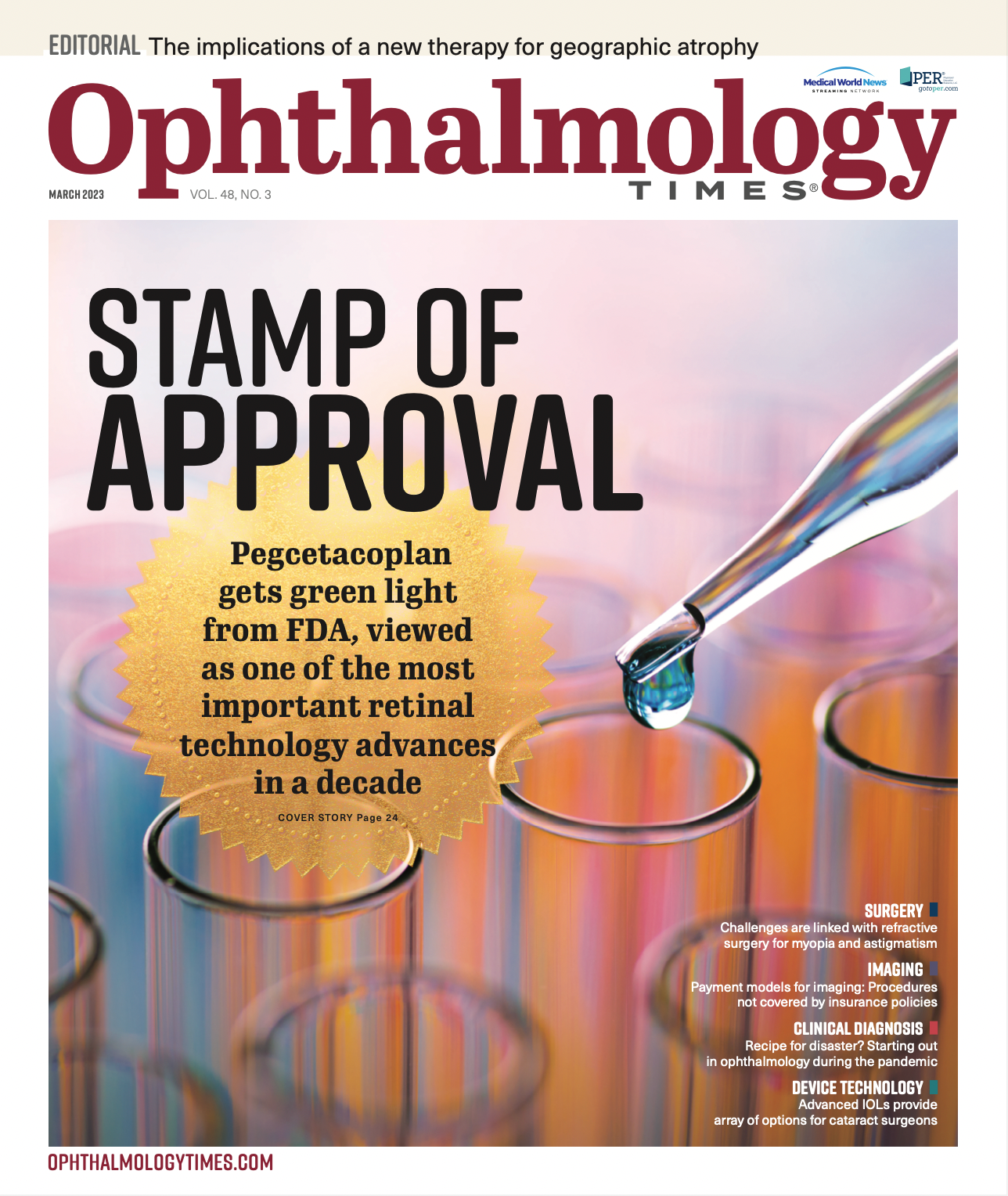Publication
Article
Digital Edition
Jumping into gene therapy with collaboration, innovation
Author(s):
Ophthalmologist looks ahead amid company’s advances over past 18 months.
(Image credit: AdobeStock/SeventyFour)

Growing up, I was a “tinkerer.” My father said I liked to figure out how things worked by taking them apart: I was deft with my hands. My early curiosity and passion are what led me into ophthalmology and what sustains me today. Through my work with patients and educational and research programs at Duke Health; leadership roles with American Society of Cataract and Refractive Surgeons (ASCRS), American Academy of Ophthalmology (AAO), and the Cornea Society; and my collaborations with corporate innovators such as Aurion Biotech, I relish my front-row seat in contributing to amazing innovations for ocular diseases.
Shigeru Kinoshita, MD, PhD, chairman of the Department of Ophthalmology at Kyoto Prefecture University of Medicine (KPUM) in Japan and the inventor of corneal endothelial cell therapy, is a fellow member of Aurion Biotech’s medical advisory board. Even prior to his landmark publication in the New England Journal of Medicine,1 we in the ophthalmology community were electrified by his exciting work in cell therapy.
Kinoshita’s remarkable discovery was how to reproduce fully differentiated human corneal endothelial cells in the laboratory. Why was this such an important achievement? Most readers are well aware that the endothelium of the cornea is a delicate but vital monolayer of cells that maintains corneal clarity and proper hydration. Each of us is born with a finite number of these cells; unlike our skin cells, for example, corneal endothelial cells do not replicate. Aging, inherited diseases such as Fuchs endothelial corneal dystrophy, or and surgical trauma can cause these cells to die. Once the cells are gone, they’re gone for good. With enough cell loss, the cornea will swell, become cloudy, and impair vision. If left untreated, patients may lose their vision altogether.
Although we know that endothelial keratoplasty has produced remarkable outcomes in patients, the procedure involves a steep learning curve, requires skill in tissue manipulation, and relies upon ready access of donor corneal tissue, which is usually not very challenging in the US, where we have excellent organ donor networks, but the rest of the world contends with chronic tissue undersupply.
In contrast, the potential merits of corneal endothelial cell therapy are incredibly exciting: an abundant supply of corneal endothelial cells, the ability to treat patients with a 1-time, minimally invasive procedure, and a less onerous postoperative recovery regimen.
Having acquired this technology from Kinoshita and KPUM, Aurion Biotech was formed to further develop and commercialize this cell therapy. When the company approached me to join their advisory board, I was eager to deepen my involvement.
Building on the work of Kinoshita, Aurion Biotech has treated numerous patients with corneal endothelial cell therapy. Over the course
of nearly 9 years, Kinoshita and colleagues successfully performed more than 60 cell therapy procedures and were able to demonstrate safety, tolerability, and efficacy, as measured by improvements in patients’ central corneal thickness and best-corrected visual acuity.
Since acquiring this technology, Aurion Biotech has added to this body of research with multiple corneal surgeons performing more than 80 procedures in 2 OUS studies. In fact, data on 22 participants from the most recent study, Escalón (NCT05309135), will be presented during the ASCRS Annual Meeting in May 2023.
In addition to the Escalón study, Aurion Biotech has had a very busy 12 months. After spinning off as a fully independent company, it raised $120 million to pursue clinical development in the US and submit a JNDA (new drug application) in Japan, which it did in June 2022. It formally convened its Medical Advisory Board, a group of corneal specialists, of which I’m a member. The leadership team includes Michael Goldstein, MD, MBA, who is president and chief medical officer. A C-level executive at 3 publicly traded biotech companies, Goldstein continues to practice at Tufts New England Eye Center in Boston, Massachusetts, where for many years he codirected the cornea and external disease service. Jonathan Sparks, JD, PhD, recently joined as chief legal officer.
Sparks has a deep background in intellectual property law and leads the intellectual property practice group at McCarter & English in Boston. The company also recruited a regulatory veteran, Sterling Chung, who previously worked for Neoleukin and Seattle Genetics, to manage its investigational new drug (IND) submission, and Sherita Hall, a clinical operations leader with decades of experience managing efficient, patient-centered global clinical trials. As a capstone achievement, Aurion Biotech was awarded the prestigious Prix Galien for best start-up in biotech and pharma.
I believe that 2023 will be an equally action-packed year for Aurion Biotech. In addition to new data being presented at the ASCRS meeting, the company is preparing to submit an IND to the FDA in order to initiate a clinical trial in the US, and I look forward to more exciting innovations in their manufacturing processes. Just like Kinoshita, the Aurion Biotech team remains deeply focused on improving the lives of patients. Their tireless energy and spirit of collaboration are what make my involvement even more rewarding.
Terry Kim, MD
P: 919-681-3937
Kim is a professor of ophthalmology and chief of cornea and refractive surgery at Duke University Eye Center. His financial disclosures Adaptilens, Aerie Pharmaceuticals, Alcon, Allergan, Aurion Biotech, Avellino Lab, Azura Ophthalmics, Bausch + Lomb, BVI Medical, Carl Zeiss Meditec, CorneaGen, Dermavant Sciences, Eluminex Biosciences, Euclid Vision Group, Eyenovia, Glaukos Corporation, Graybug, Iveric Bio, Johnson & Johnson, Kala Pharmaceuticals, Kriya Therapeutics, LENZ Therapeutics, Lexitas, Melt, Novartis, Ocular Therapeutix, Oculis, Omeros, Oyster Point Pharma, Palatin Technologies, Santen, Sight Sciences, Simple Contacts, Surface, Tarsus, and Visionology.
Reference:
1. Kinoshita S, Koizumi N, Ueno M, et al. Injection
of cultured cells with a ROCK inhibitor for bullous keratopathy, N Engl J Med. 2018;378(11):995-1003. doi:10.1056/NEJMoa1712770

Newsletter
Don’t miss out—get Ophthalmology Times updates on the latest clinical advancements and expert interviews, straight to your inbox.





